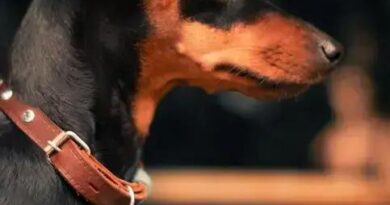What is: Ankylosis in dogs
What is Ankylosis in Dogs?
Ankylosis in dogs refers to the abnormal stiffening and immobility of a joint due to the fusion of the bones. This condition can result from various factors, including injury, arthritis, or congenital issues. When ankylosis occurs, it can significantly affect a dog’s mobility and quality of life, making it essential for pet owners to understand its implications and treatment options.
Causes of Ankylosis in Dogs
The causes of ankylosis in dogs can vary widely. One common cause is trauma, such as fractures or dislocations, which can lead to improper healing and subsequent joint fusion. Additionally, degenerative joint diseases like osteoarthritis can contribute to the development of ankylosis. In some cases, genetic predispositions may also play a role, particularly in certain breeds that are more susceptible to joint issues.
Symptoms of Ankylosis in Dogs
Symptoms of ankylosis in dogs can manifest in several ways. Affected dogs may exhibit a noticeable decrease in their range of motion, particularly in the joints that are affected. Other signs include limping, reluctance to engage in physical activities, and visible pain when the joint is manipulated. In severe cases, the joint may appear swollen or deformed, indicating significant underlying issues.
Diagnosis of Ankylosis in Dogs
Diagnosing ankylosis in dogs typically involves a thorough veterinary examination, including a detailed history of the dog’s health and any previous injuries. Veterinarians often utilize imaging techniques such as X-rays or MRI scans to assess the condition of the joints and confirm the presence of ankylosis. These diagnostic tools help in determining the extent of the condition and planning appropriate treatment.
Treatment Options for Ankylosis in Dogs
Treatment for ankylosis in dogs largely depends on the severity of the condition and the underlying causes. In mild cases, conservative management may include physical therapy, pain relief medications, and lifestyle modifications to improve mobility. In more severe instances, surgical intervention may be necessary to correct joint alignment or to relieve pain. Rehabilitation post-surgery is crucial for recovery.
Preventing Ankylosis in Dogs
Preventing ankylosis in dogs involves proactive measures to maintain joint health. Regular exercise is vital, as it helps keep the joints flexible and strong. Additionally, maintaining a healthy weight can reduce the strain on joints, particularly in breeds prone to joint issues. Routine veterinary check-ups can also aid in early detection of joint problems, allowing for timely intervention.
Living with a Dog Diagnosed with Ankylosis
Living with a dog diagnosed with ankylosis requires adjustments to ensure their comfort and well-being. Pet owners should create a safe environment that minimizes the risk of falls or injuries. Providing supportive bedding and ensuring easy access to food and water can help. Regular veterinary visits are essential to monitor the dog’s condition and adjust treatment plans as necessary.
Common Breeds Affected by Ankylosis
Certain dog breeds are more prone to developing ankylosis due to genetic factors or physical characteristics. Breeds such as German Shepherds, Labrador Retrievers, and Bulldogs often experience joint issues that can lead to ankylosis. Understanding breed-specific risks can help owners take preventive measures and seek early veterinary care when needed.
Prognosis for Dogs with Ankylosis
The prognosis for dogs with ankylosis varies based on the severity of the condition and the effectiveness of the treatment. Many dogs can lead relatively normal lives with appropriate management, although some may experience chronic pain or limited mobility. Early diagnosis and intervention are key factors in improving the long-term outlook for affected dogs.



